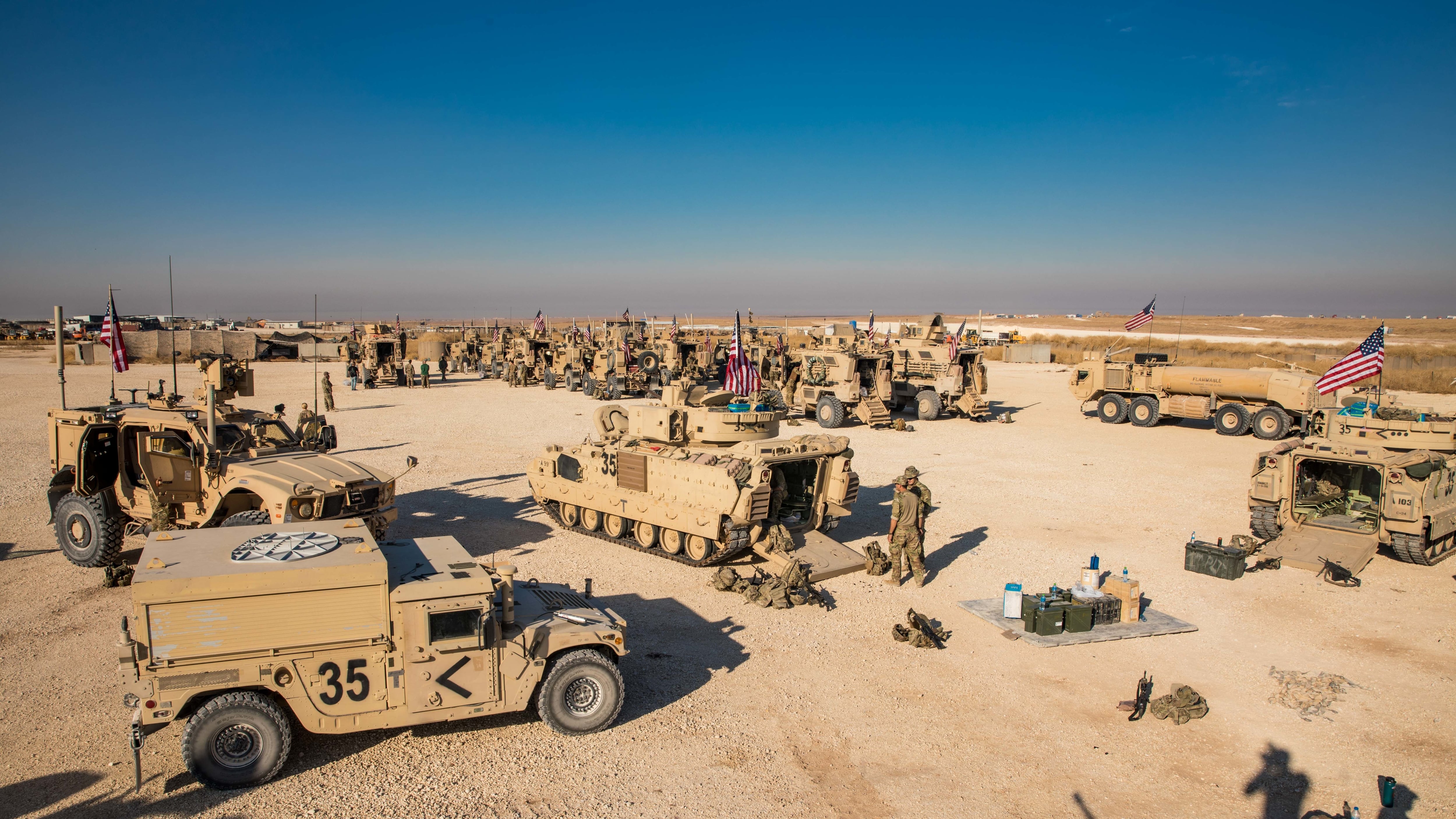Following a brief hiatus, the U.S.-led coalition to defeat the Islamic State said it started launching large-scale operations to combat Islamic State militants in Syria once more amid increased danger from Daesh attacks.
Combined Joint Task Force — Operation Inherent Resolve announced Saturday that coalition forces completed a clearance mission in eastern Syria’s Deir ez-Zor province Friday that led to multiple ISIS casualties. More than a dozen ISIS fighters were captured, but officials provided no specific numbers regarding fatalities and injuries.
OIR also said that a “significant amount” of small arms, homemade explosives and ammunition were recovered in the clearance operation.
Air Force Maj. Gen. Eric Hill, commander of Special Operations Joint Task Force–Operation Inherent Resolve, said the coalition’s special operations branch “remains committed to our relentless pursuit of Daesh.”
“As long as Daesh presents a threat, we must stay vigilant to prevent it, for the sake of the region and our homelands,” Hill said Saturday in the coalition statement.
On Oct. 6, the Trump administration announced that U.S. troops would withdraw from northern Syria — a decision that essentially cleared the way for Turkey to invade northeast Syria and attack Kurdish People’s Protection Units, or the YPG, along its border. The Kurdish militias are the backbone of the U.S.-backed Syrian Democratic Forces that have battled to eliminate Islamic State militants. Turkey, however, views the YPG as a branch of a designated terrorist organization.
Since the withdrawal was announced in October, the Trump administration has shuffled through several plans regarding the positioning of U.S. troops in Syria. But U.S. military leaders have most recently said approximately 600 U.S. troops will remain in Syria to combat ISIS and to safeguard oil fields from falling into ISIS’ hands.
With the exception of the raid that took out ISIS leader Abu Bakr al-Baghdadi last month, no anti-ISIS strikes were conducted in September or October in Syria, the coalition previously told Military Times.
Meanwhile, Gen. Kenneth McKenzie, the head of U.S. Central Command, told reporters Saturday there will be an uptick in operations against ISIS and added that there is no foreseeable “end date” for when U.S. troops would vacate Syria.
“Over the next days and weeks, the pace will pick back up against the remnants of ISIS,” McKenzie said, according to the New York Times.
McKenzie said the several hundred U.S. troops in Syria have reassembled with Kurdish allies and are prepared to carry out larger missions against ISIS, in comparison to the smaller missions they completed together in the aftermath of the Oct. 6 announcement.
“What we’re talking about are the pockets of people who represent the wreckage that followed in the wake of the caliphate,” McKenzie said. “They still have the power to injure, still have the power to cause violence.”
In March, the Trump administration said ISIS no longer had control over the territory it deemed its “caliphate,” but OIR has consistently said it will continue to target the group.
The acceleration of operations against ISIS in Syria comes after the Pentagon inspector general warned Nov. 19 that ISIS is expected to revamp its operations in Syria due to the drawdown of U.S. troops and an expected slowdown in Syrian Democratic Forces’ operations against ISIS.
The IG report said the Defense Intelligence Agency found ISIS is “likely to exploit the reduction in counterterrorism pressure to reconstitute its operations in Syria and expand its ability to conduct transnational attacks.”
An absence or reduction of counterterrorism pressure would allow ISIS an opportunity to cultivate it’s covert networks, the DIA said.





